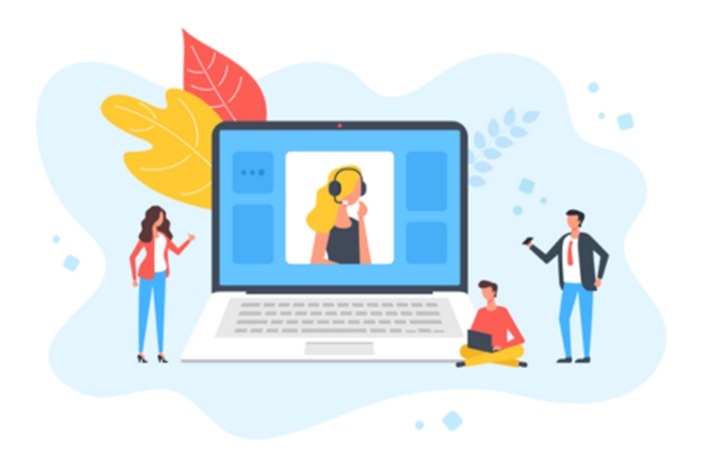Customer experience is the differentiator on which the competitiveness of organizations lies. To stay competitive, you have to offer seamless customer journeys.
It is all about seamlessly integrating all customer touchpoints into one unified experience.
This is what is referred to as omnichannel experience, and it is essential to meet the customer needs seamlessly.
Companies aiming to stay ahead of the curve must embrace omnichannel solution.
When you say omnichannel, you ought to look at customer touchpoints as a part of the customer journey and not as isolated interactions.
How do you define your omnichannel journey for Contact center Platform?
Choose the channels
Omnichannel does not mean you have to be present in all the channels. Choose the channels that your customer segment is comfortable with. Make it convenient for them.
For example, a lot of customers prefer having a two-way live chat experience to get their queries solved. Gen Z customers would prefer social media messaging. Some of your customers might send you an email about their issues and may want to follow up on live chat or WhatsApp channels.
It is very important to keep the experience consistent across all channels and choose those channels that your customers prefer to converse with.
Define the journey
Let us assume that your prospective customers land up on your website through a web search. What is it they do as soon as they come to your landing page?
- Have you laid out your landing page in a way that it is easy for them to search for information?
- Do you have a live chat provision on your website for your customers to ask anything?
- Have you got your offers available on the home page itself? Do they get to pick your offers regardless of where they are on your website?
- Do you have heatmaps to understand the pages your customers visit, and do you have metrics to figure out cart abandonment rates and pages where they drop off?
- Have you tested your call-to-action to see what works and what doesn’t?
- Have you understood the trouble spots on your website?
- Do you have a consistent experience on your social pages and other promotional channels similar to your website?
Once you figure out the workflow based on your objectives and customer’s needs, mapping the journey becomes simple.
Once you map the journey, servicing them across multiple channels, such as email, phone, chat, and messaging apps becomes simple and powerful.
Let me give you another example.
You run a multi-specialty hospital. Your patients use your appointment setting app to book appointments.
The biggest problem for you as a hospital is the no-shows you encounter which cause you to leave a lot of money on the table and affect the patient experience.
How do you get your patients to reconfirm, reschedule, or cancel easily?
You send a voice broadcasting message to all your patients who have booked appointments with the keypress option for them to confirm, reschedule, or cancel the appointment.
This gets updated to the appointment app and makes those slots available for other patients to book.
Likewise, for different verticals, your omnichannel journey differs. Ensure that your platform provides you the options to easily configure such options.
Communication is key
Let us assume that 30% of your customers abandon the cart for a variety of reasons. You identify that the biggest variable between the time they add a product to the cart and abandoning is the shipping cost.
Now that you have understood that one of the possible reasons is the shipping cost, you can run campaigns to those customers suggesting that shipping costs would be waived for those with an order value above a certain amount.
This will lead to conversions as well as additional business. Around 10% of the 30% of customers who abandoned the cart would end up buying.
You run another campaign completely waiving off the shipping cost, and now your conversions can go up further.
Let us talk about another example scenario here.
Though you have abandoned the cart for a particular product, you have made various other purchases, and you are an existing customer.
You need support on another product that you have bought from them, so you call their customer service center.
The customer service representative handles your query to your satisfaction. At the same time, he knows that you have abandoned the cart while trying to make another purchase.
He pulls it out and offers you free shipping on the phone, and if you would be willing to make the purchase. You agree and that purchase is also done.
Omnichannel communication can really help convert, upsell, and cross-sell.
Monitor and measure
How do you know whether your omnichannel strategy is working?
You have defined the customer journey, identified the channels, and are communicating – now it is time for you to monitor and measure to see if this is working or if it needs a tweak.
What metrics are most important for measuring your omnichannel journey?
- Do you know your ROI on each channel?
- Are your channels being used equally by your customers?
- Has the customer lifetime value increased after implementing the omnichannel strategy?
- Is there any improvement in your sales and conversions?
- Are your customer satisfaction scores increasing?
- What about your customer resolution times?
Consider the steps outlined above as your playbook for mastering your omnichannel strategy for your cloud contact center platform. You have to continuously measure these and keep improving them to get the best out.
Building and refining your omnichannel strategy is a continuous process.
If you want to make things easy for your customers, you have to think omnichannel and it helps you provide the best possible experience, besides letting you improve your revenues and sales.
With omnichannel, you would also have happier customer service representatives, as it makes it easier for them to handle customer queries.
